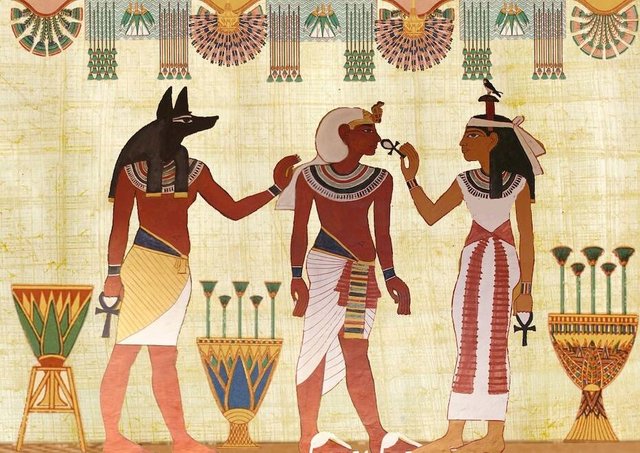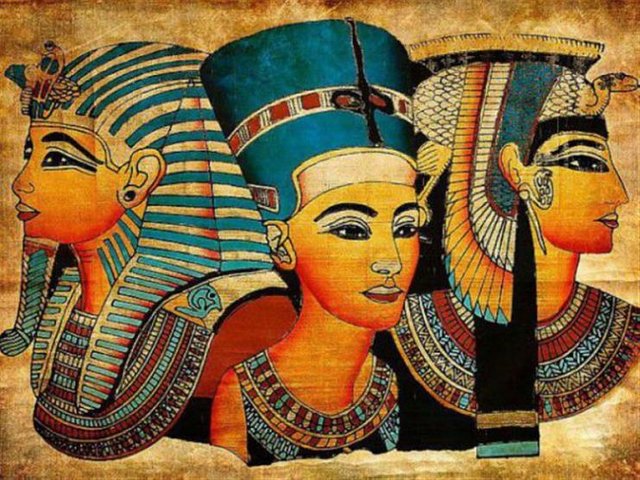- Severalmonths ago, on April 3, 2021, 22 royal mummies were transferred from the Egyptian Museum in Tahrir Square in the center of the Egyptian capital, Cairo, to its new location in the National Museum of Egyptian Civilization in Fustat, east of Cairo {According to Wikipedia}.

This was done in a majestic procession, and a beautiful celebration by all standards is called a Mummy Parade, which is some people thought was one of the hugely expensive Hollywood films. But it was a fascinating reality and an appearance that shakes souls, and it was wonderfully a unique event that all humanity is proud of, not only Egypt.
- Approximately two days ago, on November 25 of the same year, the legendary Rams Road, which connects the temples of Luxor and Karnak, was opened. Luxor became for the first time an open museum and returned as a shrine and destination for all visitors from all over the world as it was in the past, and even restores its cultural position that was lost on Over the past 10 years, the event was also truly unique and distinct...
It took place in a festive atmosphere and concluded by recreating the scene of the ancient Egyptian Opet Festival in all its details.
Someone commented that celebration (called) "Daso Ibra" said: This incredible presentation proves that Egypt is now a mixture between ancient and modern history.
Egypt, the gift of the Nile, was and will remain the land where the civilization began. I wish that; we continue to move forward, exactly as the young talented multi-lingual Sultan, Mehmed II said when he conquered Constantinople: "And Now We Begin."

All these very distinguished events and celebrations that took place, especially this year, bring to mind the memory of the ancestors of the ancient Egyptians and raise many questions about their daily lives, customs, relationships and hidden secrets.
But we will not ask all the questions at once. In this article, it is sufficient for us to come up with answers from archaeologists to one of the questions that preoccupy many people, namely:
Why didn't the Pharaohs dress warmly in the winter? ..
Secretary of the "Supreme Antiquities" clarifies

The ancient Egyptians loved fashion and accessories, and although the design (style) of clothing was simple, it absolutely was elegant and created with considerable care, giving them their “clothing style” a unique cultural appearance in history.
The ancient Egyptians designed their clothes to be lightweight in order to suit the country's hot temperature. Most of them were made of linen or vegetable fibres. Although, as depicted on the walls of temples and in art:
How could the ancient Egyptians adapt to their summer clothing throughout the winter?!
Egypt is exposed to cold weather, and temperatures as low as snow in some areas, which raises the question of many about how the ancient Egyptians adapted to winter with their summer time season clothes, that appeared on the walls of temples and paintings.
Dr. Mostafa Waziri, Secretary-General of the Supreme Council of Antiquities, answered the question during his meeting with media presenter Heba Al-Abasiri on CBC channel, and Magdi Shaker, chief archaeologist at the Ministry of Antiquities, saying: The climate of ancient Egypt differed between three seasons of the year, each season is Divided into four months, the seasons are flood, sowing, and harvest, and there was no summer, winter, spring, and autumn currently underway. But they additionally confirmed that the pharaohs recognized and wore wool and linen, however they didn't record this in their inscriptions on the walls of temples and obelisks. Shaker pointed out that the normal climate in Egypt at that time tended to be summer and warm throughout the year, and the weather was not the same as the weather at the present time, but this does not prevent the ancient Egyptians from passing through cold days.
According to the antiquities expert "Shaker", (the ancient Egyptians did not go out at night a lot in the ancient era, and the ancient Egyptian used to make bread ovens inside their house, which used to heat the homes greatly, especially since the ancient Egyptian used to make his bread daily, in addition to using the incense burners that were from the coals of fire.) Which gave a kind of heating, in addition to the fact that he used to make his house from all-natural materials that help in heating, besides that the ancient Egyptians were all very hard work, whether agriculture, building and construction, industry or wars and other hard work.
Shaker explained that the ancient Egyptian had two types of thin and thick linen, and the cleanliness of clothes was of great importance in the ancient Egyptian civilization, as the Greek historian Herodotus, who visited Egypt in the fifth century BC, says that among the peoples of the earth, the ancient Egyptians were the cleanest people With faith and health, it was settled in the conscience of the ancient Egyptian that the cleanest person is the closest to God, and that is why the ancient Egyptians were always clean in their bodies and their linen clothes were always clean and white, as they were known to be the owners of white clothes.
He pointed out that the remnants of clothes that we received from the ancient era, starting from the era of the first dynasties, and that resisted the times of eternity, were clothes made of the strongest of coarse fabrics.
The chief archaeologist stressed, that what was found on the walls of the temples, does not necessarily mean its presence on the ground, “It was noted that the ancient Egyptian when he wanted to paint himself, he painted himself beautiful, young and his body harmonious, does this mean that they did not have obese or elderly patients? ? .. Of course not, but they liked to paint the ideal picture that they wished in the other world."
The chief archaeologist gave, for example, the girl who is currently getting married in the winter. There is no bride who wears winter clothes or a winter wedding dress. It is certain that the ancient Egyptian was feeling cold and had clothes to help him keep warm, but summer clothes are more elegant since the ancient era until now, so he wanted to He immortalizes himself with the perfect figure and the perfect body.
Waziri added that the ancient Egyptian believed in the existence of life after death and resurrection, and believed that the soul would identify him later through his mummy and his name, the inscription and his statue of his body on the ancient walls.

So the engraving of kings and others on the walls came with the body as naked as possible, and he wore everything that was slippers, so that his spirit might recognise him in the hereafter, as if the ancient Egyptian was creating his mark with his entire body.
Sources:
#Wikipedia #Masrawy #elwatannews #google